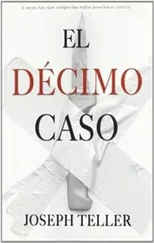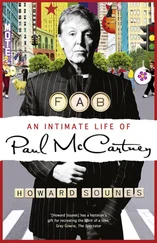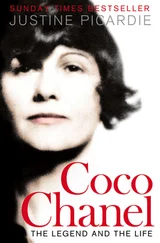By 1964, with the advent of a new designer, Gabrielle did indeed feel that barbarism was walking the streets. André Courrèges was a former cutter at Balenciaga and had created a sensation with his “modernist” clothes. Breaking with tradition, both in his styles and his use of fabric, such as plastic, he called his 1964 collection Space Age and had his mannequins dancing “the jerk” as they moved down the runway. In 1965, Courrèges, along with Mary Quant in Britain, would claim to be the inventor of the miniskirt. Soon Gabrielle’s favorite bête noire, Courrèges, refused to accept her criticisms and said, “I am the Matra, the Ferrari, Chanel is the Rolls-Royce: functional but static.” Courrèges’s challenge to Gabrielle’s notion of dress was genuinely original. And she sensed that his style was closer to the new spirit of the age than her own was.
Gabrielle felt further threatened when young Jeanne Moreau first “defected” to Pierre Cardin, whose work Gabrielle loathed; she even went so far as to live with him. Gabrielle broke with her young friend.
In May 1968, when student protest swept the world, for a month Paris was in chaos. And, just as de Gaulle had sounded out of touch to those political reformists, so Gabrielle now sounded out of date to many of her fellow couturiers, intent on their own rebellion. They were young and couldn’t help but be affected by the antiestablishment youth culture of the late sixties. Raw, immature, naive, self-absorbed and idealistic as it was, their rebellion was also expressed in the new street style of the young, deliberately breaking the old rules of elegance and luxuriating in a kind of theatrical “antidressing.”
Gabrielle cried out in protest, “They like the street. They want to shock. They try to be amusing. For me fashion is not amusing,” and she repeated her mantra: “The eccentricity should be in the woman not the dress.” Gabrielle’s own obsession with youth — she hated growing older — as a vital, creative thing was in opposition to what she saw as the destructive force abroad in the late sixties. But no matter how much the old lady thundered, the young were set against their elders and their elegance; it was anathema.
As Gabrielle grew more defensive about her competition from the young, she didn’t confine herself to pouring scorn on Courrèges alone. In 1969, for example, she would use the announcement of the dreadful-sounding musical Coco , in New York, with Katharine Hepburn playing Gabrielle, to denounce her fellow designers, via journalists from press and radio invited to her apartment in the rue Cambon. Sitting in her salon on the famous sofa, Gabrielle spoke of the degradation of modern fashion. Its present meandering infuriated her. She hated the miniskirt, said knees were horrible, and that “fashion today is nothing but a question of skirt length. High fashion is doomed because it is in the hands of the kind of men who do not like women and wish to make fun of them. Men dress like women; women dress like men… No one is ever satisfied… Men used to woo and be tender… Boredom of every kind has become an institution.” These and more such remarks were calculated to stir up controversy.
Among fashion designers in France, there had long been a tradition of showing respect for Coco Chanel, but after Gabrielle’s latest diatribe, several no longer bothered with such politesse. Paco Rabanne, Louis Féraud, Philippe Heim, Marc Bohan (Dior), Guy Laroche, Pierre Balmain — all retaliated with comments in their own way as withering as Gabrielle’s. Pierre Balmain was more reserved and attempted to keep his comments impersonal. But he voiced the thoughts of all of them when he said:
It is regrettable that Mademoiselle Chanel chooses to ignore the history of costume. But she knows that every period has been marked by a certain style of dress, imposing the tendencies and tastes of the times, which the designers can do no more than express, each according to his manner… Mademoiselle Chanel has every right to be against the short skirt. Nonetheless, this time, she is far from having the unanimous agreement of her colleagues.
What this young man, and most of his contemporaries, did not understand was that, rather than only having reflected her times — the accustomed description of fashion’s role — Gabrielle had been among the few who had led hers.
Meanwhile, she still had a loyal following, and the voyeurs who came to her shows, because she had become a kind of monument. However, there were also empty seats, and the audience wasn’t jostling to congratulate her afterward. And while the fashion house remained a significant “motivating force for the promotion and sales of the perfumes,” 21Gabrielle also admitted, “The House of Chanel is doing well, but fewer orders are being turned down.” 22In fact, she no longer “made fashion news.” And in those moments when she dropped her guard to reveal her vulnerability, Gabrielle was apprehensive and uncertain. At the same time, she was far too intelligent not to appreciate that society was going through radical changes, and observed that “in the time we’re living in now… Nothing any more fits in with the lives people lead.” 23And her thoughts of more than half a century earlier spring to mind: “One world was ending, another was about to be born… I was in the right place… I had grown up with this new century: I was therefore the one to be consulted about its sartorial style.” 24
Gabrielle was, though, no longer the first to be consulted about style. Instead, she had become a public figure, whose time was bound up with serving her legendary name. How else was she to absorb that still remarkable physical and emotional energy? But while her frequently abrasive manner drove others to see less of her, there was a small group of young admirers who were more patient.
Gabrielle had always refused to be interviewed for television, but in 1969, her friend the Opéra Comique dancer Jacques Chazot, who had made himself into an indispensable young society figure, wanted to make Gabrielle the first subject of a television series on famous women. He was overjoyed when she agreed. Gabrielle saw much of Chazot and believed that she could trust him. Without any rehearsals or script, in that soft, low voice, belying the incisive authority of her manner, Gabrielle held forth on camera for twenty-five minutes. She concluded with the pronouncement “Well, if they’re not pleased with this, what do they want?” 25
Editing the interview, Chazot was in a torment of indecision, until eventually he decided he would cut nothing. Bringing along his friend, the rebellious and already iconic writer Françoise Sagan, they watched it with Gabrielle. Her trust in Chazot had been well placed; she pronounced it “very good.” Having been rather slow off the mark, the French television service now realized the interview’s potential and readjusted their programming schedule with it in a prime slot.
The response was tremendous. Chazot received all kinds of filming offers, and Gabrielle was gratified to receive a huge quantity of approving mail.
Meanwhile, the younger designers, irritated by Gabrielle’s lack of indulgence over their work, were unable to see that much of their “rebellious decade” was simply a mass-culture version of the cataclysmic changes Gabrielle had experienced with that small and extraordinarily creative group of people either side of the First World War. And while her complaints were not all justified, essentially they were more farsighted. And at the heart of her complaints was something more significant than an irritable old woman’s aversion to change.
Gabrielle had not been uniquely responsible for changing women’s appearance during the first decades of the century. While undoubtedly one of only a handful of initiators of a new, easy kind of female glamour, Gabrielle was different in that she herself lived the emancipated life her clothes were made for. Talking of having “liberated the body,” she had “made fashion honest.” More than any other designer, Gabrielle had been responsible for the democratization of fashion, making it more accessible to the majority than ever before. Her own radical life and work had gone hand in hand with the rise of political democracy, yet as a fashion designer, she had overcome the dilemma this created for the couturier: how to be exclusive. An American’s compliment, that she had “spent so much money without it showing,” delighted her. 26Of all the couturiers, Gabrielle had walked the finest line in dressing the rich as the poor, in other words, with simplicity.
Читать дальше












